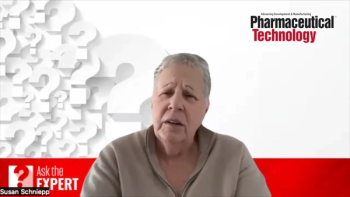
Amgen's Psoriasis Candidate Bests Stelara in Head-to-Head Comparison
Amgen's Phase III candidate for the treatment of psoriasis was found to clear skin lesions better than Johnson & Johnson's Stelara.
Amgen and AstraZeneca announced on Nov. 11, 2014 that their drug brodalumab, which is being developed in collaboration with both companies for the treatment of psoriasis, cleared the scaly skin patches associated with the condition more efficiently than Johnson & Johnson’s Stelara (ustekinumab).
The multi-arm study evaluating two doses of brodalumab enrolled 1881 patients with moderate-to-severe plaque psoriasis. Of the participants, 36.7% of patients in the brodalumab 210-mg group, 27% of the patients in the 140-mg brodalumab group, 18.5% of the patients in the Stelara group, and 0.3% of the patients in the placebo group and achieved total skin clearance as measured by the Psoriasis Area Severity Index (PASI 100). Meanwhile, 85.1% of the patients in the 140-mg brodalumab group, 69.2% of the patients in the 140-mg brodalumab group, 69.3% of the patients in the Stelara group, and 6% of those in the placebo group achieved at least 75% improvement from baseline in disease severity after 12 weeks (PASI 75).
Although the psoriasis treatment market is crowded, brodalumab is one of the first investigational treatments for psoriasis targeting the interleukin-17 (IL-17) receptor. The drug works by blocking the binding of several IL-17 cytokines to the receptor, inhibiting the inflammatory signal. Other manufacturers are also developing interleukin therapies for psoriasis, including Novartis (secukinumab), Lilly (ixekizumab), Merck (MK-3222), and Johnson & Johnson (guselkumab). Stelara works by targeting IL-23 and IL-12. Many existing psoriasis biologics, such as Humira (adalimumab), Remicade (infliximab), and Enbrel (etanercept), inhibit TNF-alpha signaling.
“Despite a variety of treatment options available for psoriasis, many patients still do not meet skin clearance goals,” said Sean E. Harper, executive vice-president of research and development at Amgen,
Despite brodalumab’s efficacy, there were more serious adverse events associated with the Amgen antibody than were experienced with Stelara: 0.6% of participants experienced serious side effects with Stelara, compared with 1.4% (210 mg) and 1.6% (140 mg) with brodalumab. It is also unclear what medication dosage level was given to study participants in the Stelara group.
Source: Amgen
Newsletter
Stay at the forefront of biopharmaceutical innovation—subscribe to BioPharm International for expert insights on drug development, manufacturing, compliance, and more.




